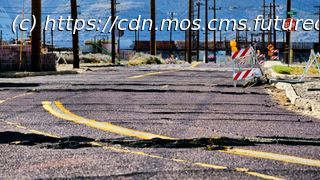Changes in sea level and glacial melt could make earthquakes more likely in the coming years.
Earthquakes are one of the most mysterious and terrifying natural disasters. Although we have some idea of when the big ones might happen, others can occur seemingly out of nowhere, bulldozing cities and creating secondary disasters such as fires, landslides and tsunamis. Climate change is causing increases in other natural disasters, like wildfires and hurricanes. So could it make earthquakes more common, too?
The biggest and most dangerous type of earthquake is the tectonic earthquake. These earthquakes occur because of tectonic plates, the massive slabs of rock that make up Earth’s crust and upper mantle. Heat emanating from deep within the planet causes these plates to move an average of half an inch (1.5 centimeters) per year, making them rub up against each other. The pressure in those areas builds until it reaches a breaking point where the plates will move suddenly, releasing energy that causes earthquakes.
Unlike with other disasters, it’s almost impossible to predict when earthquakes will happen, making planned evacuations next to impossible.
Unfortunately, climate change could make quakes happen closer together and with more intensity, experts told Live Science. With global warming, glaciers are melting at an increased rate. When melted glacier water flows off land and into the sea, the land that used to sit underneath it rises, said John Cassidy, an earthquake seismologist at the Geological Survey of Canada and the University of Victoria.






